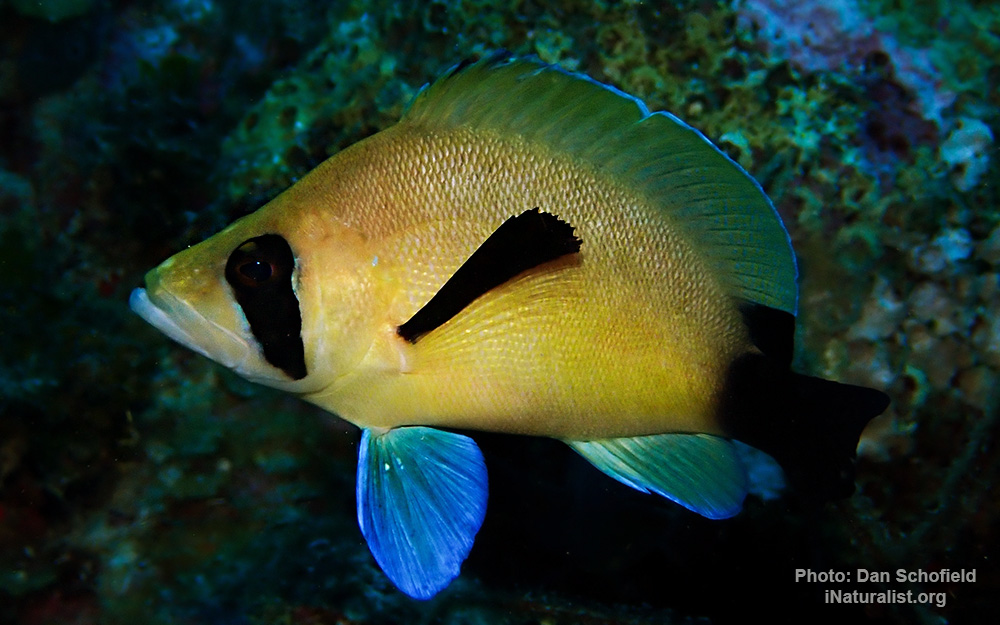Masked hamlet
(Hypoplectrus providencianus)

Classification
General data
Masked hamlets have pale bodies with black, blue, and pale yellow fins and are identifiable by the black bar across their eyes.
H. providencianus can reach lengths of up to 13 cm.
H. providencianus possesses a spine at the base of the dorsal fin, a protruding upper jaw, a flattened head, and a lateral line running down the flank.
Presumed to be unique to H. providencianus is a streak of black that surrounds the eye. In addition to this, black coloration is present in most areas of the pectoral fins, being accented around the upper edges of the fin. The caudal fin is also black, with a darker shade of black being present in the upper and lower lobes of the fin. Also, a black caudal saddle may be present, or absent entirely
The body is white in areas lacking black pigmentation Also, in comparison to other hamlets, H. providencianus lacks spots on the rostrum.
H. providencianus resides in coastal waters of the Caribbean, including near Mexico, Panama, Jamaica, Puerto Rico, Turks and Caicos, the Cayman Islands, Colombia, and the Archipelago of San Andrés, Providencia and Santa Catalina.
H. providencianus commonly makes its habitat in patch corals inside lagoons in relatively shallow waters of depths of about three to ten meters below sea level. While the species may be present in the offshore waters of islands, they are the only member of the Hypoplectrus genus that is completely absent from continental shelves. In addition, there is a lack of specific areas where H. providencianus congregate. The masked hamlet tends to swim in lower sections of the water column near its habitat.
In terms of diet, H. providencianus feeds on crustaceans and other small fish, much like the diets of other species in the Hypoplectrus genus.










